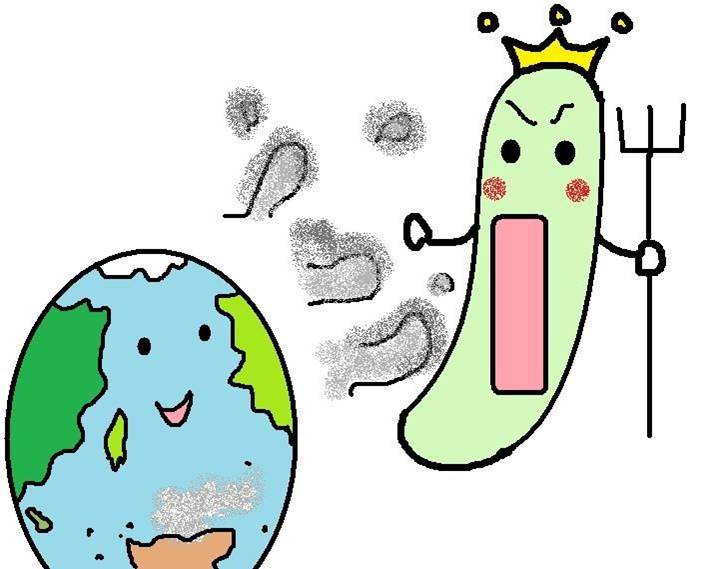Team:TzuChiU Formosa/Project
From 2010.igem.org
| Line 2: | Line 2: | ||
<body> | <body> | ||
<p> | <p> | ||
| - | <object type="application/x-shockwave-flash" height="650" width="125" data="https://static.igem.org/mediawiki/2010/a/a7/ | + | <object type="application/x-shockwave-flash" height="650" width="125" data="https://static.igem.org/mediawiki/2010/a/a7/NavBar4.swf" align="left" style="float: left"> |
continued... | continued... | ||
<param name="movie" value="https://static.igem.org/mediawiki/2010/a/a7/NavBar3.swf"/> | <param name="movie" value="https://static.igem.org/mediawiki/2010/a/a7/NavBar3.swf"/> | ||
Revision as of 15:40, 1 September 2010
Contents |
Project 1: Poisedon save the world
Recently, the crude oil spill problems have been seriously influencing the marine ecosystem at the Gulf of México. For instance, sea turtles and dolphins often had swum in the crude oil slick which will cause them death. Moreover, the feathers of sea-birds stained by oil would fail to keep them warm, preventing them to fly, and so forth. The oil leaking problems will bring dramatic environmental catastrophe such as low oxygen in sea water, breakdown of food chain and etc. However, there are three kinds of solution to the crude oil leak, namely: physical, chemical and biological method. Because it costs a lot to resolve oil spill by physical solution; while it produces secondary environment damage by chemical solution; thus, we wanted to use the biological way to solve this problem.
The microbacteria which could degrade petroleum hydrocarbons, including bacteria, fungi, yeast and algae are more than 100 genera and more than two hundred species. We found out that there are many different kinds of oil-eating bacteria on the earth. Especially the bacteria Alcanivorax borkumensis SK2, which only live in oil polluted environment and its life only depend on crude oil. A. borkumensis SK2 grows in the ocean; they could decompose the crude oil and turn it into metabolic product which could be self-utilize. It has three enzymes namely alkane 1-monooxygenase (alkB1), alcohol dehydrogenase (alkJ), aldehyde dehydrogenase (alkH), which could degrade long chain alkanes . However, the major problem is that A. borkumensis SK2 will produce large volume of metabolic carbon dioxide (CO2) during the process of crude oil degration. Therefore, Alcanivorax borkumensis SK2 can solve the oil spill problem, but produce greenhouse gas which will further pollute the environment.
We want to handle oil spill pollution and at the same time reduce CO2 by-product. Photosynthesis could give us a hand on the CO2 problem. And we found that cyanobacteria have chlorophyll, which has shorter life cycle & reproduction cycle, and could survive in the ocean. So we wanted to introduce these three genes which could metabolize oil into cyanobacteria to further prove our hypothesis.
http://lh4.ggpht.com/_h9TICECh1GQ/TEBR8iR14KI/AAAAAAAAB88/d_47cMOvj6A/s800/poseidon.jpg
Figure 1
(R)Copyright reserved to TzuChiU-Farmosa.
We expect to transform 3 long-chain-alkane-degradation enzyme genes of Alcanivorax borkumensis SK2 into cyanobacteria, and try to build up a pathway to degrade the long chain alkane of crude oil. When the long chain alkane passes the ABC transporter and enters cyanobacteria, AlkB1 will turn this long chain alkane into alcohol, then, AlkJ converts the alcohol to alkanal. These alkanal will be transformed into alkanoate by AlkH, then, become acyl-CoA by the enzyme of cyanobacteria. Acyl-CoA can enter the β-oxidation of cyanobacteria, but this step will produce a lot of CO2. These CO2 can be reabsorbed and be used in carbon-fixation, then enter photosynthesis. Finally, cyanobacteria can convert these CO2 into O2 and release them into air. (Fig. 1)
Project 2: Golden Li
Introduction
We know that β-carotene and lycopene are natural anti-oxidant in food. In human body, anti-oxidant can fight radical to prevent cell dysfunction causing by oxidation.
As we known, E.coli can naturally produce IPP and DMAPP through non-mevalonate pathway to form FPP(colorless), which can turn to β-carotene.
And in 2009 iGEM Cambridge team successfully create some biobricks to produce β-carotene and lycopene in E.coli. The biobrick is Part BBa_K274210, which contain four enzymes: crtE, crtB, crtI and crtY can convert FPP to β-carotene.
We plan to use the biobrick to make our E.coli produce β-carotene, and create a system that secreted β-carotene out of E.coli. Therefore, we can collect β-carotene from the medium.
By using our E.coli to manufacture lots of β-carotene, we are able to reach the goal, which solve the malnutrition problem in developing country.
 "
"
